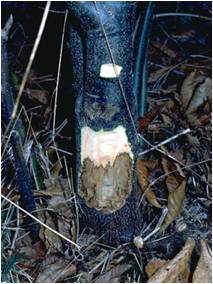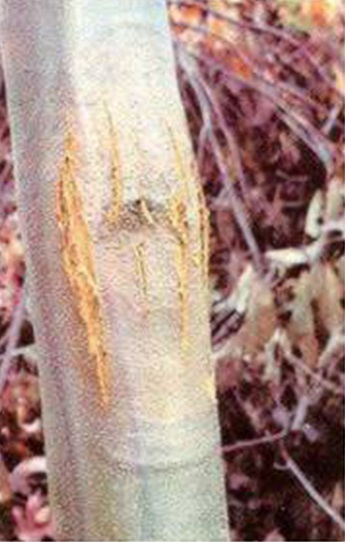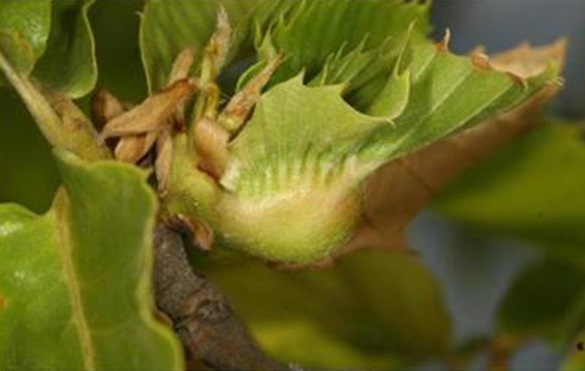The main threats for European chestnut in Portugal and Europe result from biotic stress. These include root rot also known as ink disease, caused by oomycetes of genus Phytophthora spp., blight disease caused by the fungus Cryphonectria parasitica (Murrill) ME Barr, introduced in Europe from the United States in 1938, responsible for almost the total destruction of chestnut forests in the United States (Bhiragi et al., 1946) and also the pest gall wasp, Dryocosmus kuriphilus Yasumatsu, introduced in Europe in 2002.
Oomycetes of the genus Phytophthora are highly pathogenic since they affect a great number of annual and perennial species throughout the world. Phytophthora cinnamomi, the causal agent of the ink disease, poses a serious threat to the chestnut tree in Europe and North America. It was introduced into both continents from Asia around the 1800s. In the Iberian Peninsula. P. cinnamomi is perhaps the agent with higher pathogenicity for the C. sativa species (Vettraino et al., 2001). In Portugal, it affects the production of fruit, with a great negative impact in the economy of mountainous regions of Trás-os-Montes region, the main producing area, leading to a low productivity of Portuguese orchards.
From 2002 the gall wasp, Dryocosmus kuriphilus Yasumatsu, first identified in Europe, specifically in the Northwest of Italy, has become a serious threat to the chestnut. This insect, native to China, was introduced accidentally in Japan (1941), Korea (1963) and in the United States of America (1974). It causes the development of galls in leaves, buds or inflorescences and has a detrimental effect on both growth and tree production. For both blight and gall wasp, biological control takes time but is available, the first through hypovirulent strains of the fungus, the second through parasitoids, as Torymus sinensis. For ink disease there is no biological control agent available. Chemical methods used to date have not shown lasting efficacy and furthermore negatively impact the environment. Thus, control of the disease calls for the use of improved plant materials with resistance to Phytophthora cinnamomi.
| Root Rot (ink disease) | Blight Disease | The Gall Wasp |
|---|---|---|
 |
 |
 |




